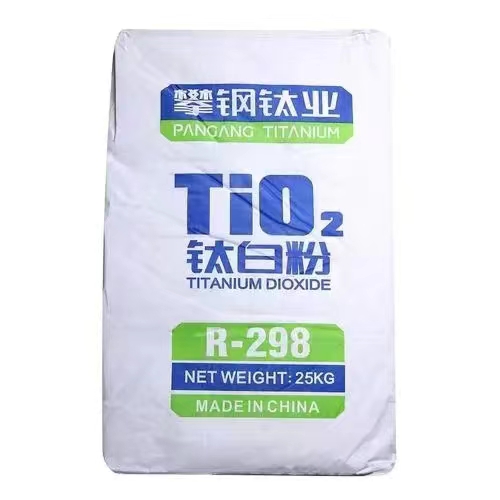
ส.ค. . 20, 2024 18:57 Back to list
Exploring the Toxicology and Safety of Titanium Dioxide through LD50 Studies and Implications
The Toxicological Profile of Titanium Dioxide Understanding the LD50
Titanium dioxide (TiO2) is a widely utilized compound in various industries, notably in paints, coatings, plastics, and cosmetics, primarily due to its excellent pigmentation properties and UV resistance. While its use is prevalent, concerns about its toxicity and potential health risks, particularly in the context of its LD50 (lethal dose for 50% of the test population) are gaining attention. Understanding the implications of TiO2's LD50 value is crucial for assessing its safety in consumer products and industrial applications.
What is LD50?
LD50, or the median lethal dose, is a standard measurement used in toxicology to determine the acute toxicity of a substance. It represents the dose required to kill half of the test population, typically expressed in milligrams of substance per kilogram of body weight (mg/kg). The lower the LD50 value, the more toxic the substance is considered. For titanium dioxide, determining its LD50 is complex due to its varying forms (such as anatase and rutile) and the routes of exposure (inhalation, ingestion, dermal).
Toxicological Profile of Titanium Dioxide
The acute toxicity of titanium dioxide is generally considered to be low. Available data indicate that the oral LD50 of TiO2 in rats is greater than 10,000 mg/kg. This suggests that TiO2 would be classified as a non-toxic substance when ingested in moderate quantities. However, the inhalation route presents different challenges. Studies have indicated that the inhalation exposure to titanium dioxide nanoparticles may cause respiratory issues, inflammatory responses, and in some extreme cases, lung cancer in animal models.
ld50 titanium dioxide

The primary concern regarding TiO2 arises from its nanoscale forms, which have different physicochemical properties compared to their bulk counterparts. Nanoscale TiO2 is used in a variety of products, including sunscreens and cosmetics, owing to its effective UV filtering capabilities. However, due to its small size, it can penetrate biological barriers and potentially lead to harmful outcomes if inhaled or absorbed through the skin.
Regulatory Perspectives and Safe Usage
The use of titanium dioxide is regulated in many jurisdictions. For instance, the European Union has classified TiO2 as a possible carcinogen when inhaled in the context of occupational exposure, primarily reflecting concerns associated with prolonged exposure to dust and fine particles. As a result, industries are urged to implement safety measures to mitigate inhalation risks, such as proper ventilation and personal protective equipment.
In consumer products, regulatory bodies like the U.S. Food and Drug Administration (FDA) and the European Commission have approved TiO2 for use in food and cosmetics at specified limits. The emphasis on labeling and risk assessment is critical, especially for products that might expose individuals to titanium dioxide nanoparticles.
Conclusion
In conclusion, while titanium dioxide has a relatively high LD50 indicating low acute toxicity through oral exposure, the concerns surrounding its inhalation and nanoscale forms necessitate caution. Ongoing research is essential to fully understand the long-term effects of TiO2 exposure, particularly in occupational and consumer settings. Regulatory guidelines play a crucial role in ensuring that the use of titanium dioxide in various applications remains safe. As our understanding of its toxicological profile evolves, it is imperative to balance the benefits of titanium dioxide in industrial and consumer products with its potential health risks. This balanced perspective will ultimately foster safer practices and innovations in its application.
-
Best Baso4 Price Wholesale & Manufacturer Deals in China
NewsApr.29,2025
-
Rutile Titanium Dioxide R698 Supplier Coating & Paint Solutions
NewsApr.29,2025
-
Premium Titanium Dioxide Ultra White Paint High-Coverage & Durable
NewsApr.29,2025
-
China Titanium & TiO2 Powder Factory Reliable Rutile & Lithopone Supplier
NewsApr.28,2025
-
Titanium Dioxide Types High-Purity Grades from Trusted Factories & Suppliers
NewsApr.28,2025
-
High-Quality Titanium Dioxide White Pigments Wholesale Supplier
NewsApr.28,2025
